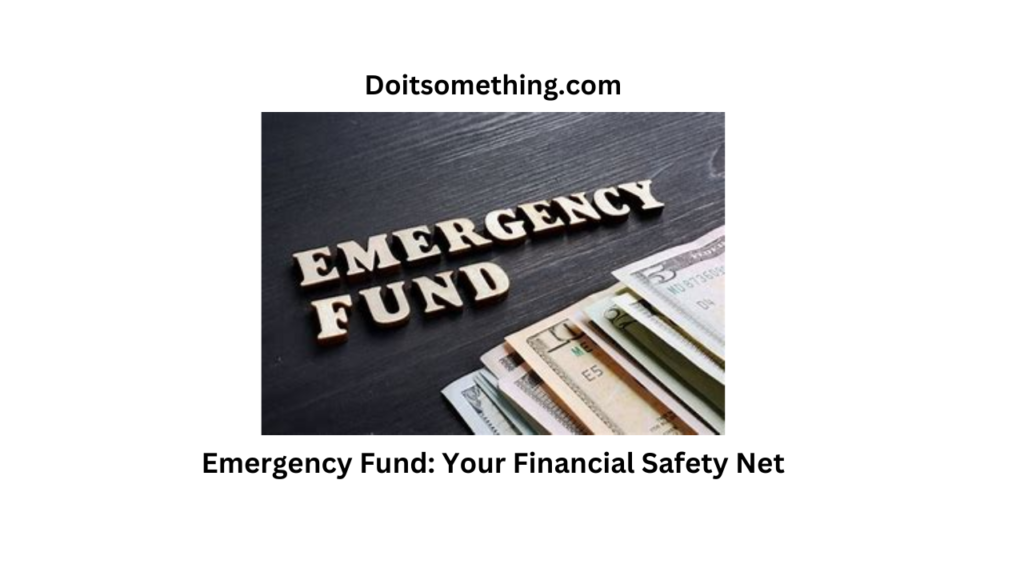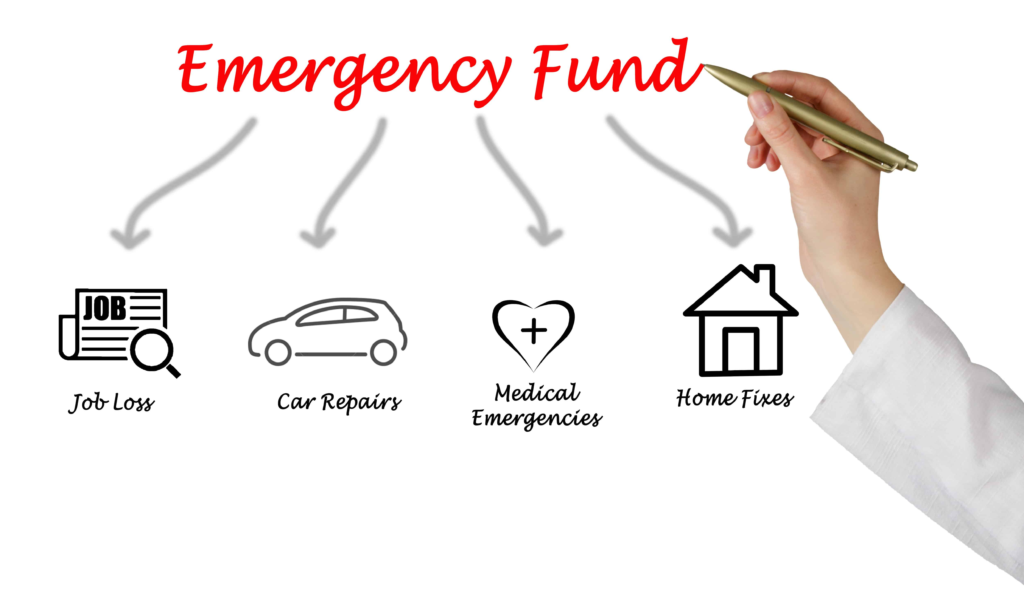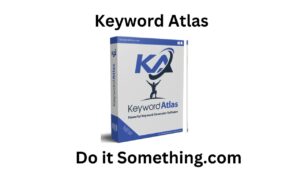Emergency Fund: Your Financial Safety Net [2023]|Do It Something

Emergency Fund: Your Financial Safety Net
How to Save For an Emergency Fund
If you are familiar with Emergency Fund, you should read this article. Continue reading if you want to learn more about utilizing.
Also, read about Understanding Different Types of Loans Available.

An Emergency Fund is a money cushion that can help you deal with unexpected expenses. It’s also a financial safety net for avoiding debt.
Unexpected emergencies can include a major unexpected event like job loss, a sudden repair or a medical bill that you can’t afford.
An emergency fund can cover these types of expenses so you don’t have to use credit or take out a loan, which can turn into debt and cost you more in interest.
A good place to put your emergency fund is a high-yield savings account or a certificate of deposit (CD). These accounts can earn more interest than regular savings and won’t charge you an early withdrawal penalty, but they may take months or years to mature.
Set up automatic transfers from your checking account to a savings or emergency fund account. You can even ask your employer to send a part of each paycheck to this account.
The best way to save for an emergency fund is to set a goal and then work toward it. Begin with small goals, such as $1,000 or $2,000. Once you reach your goal, continue to add money from each paycheck.
DO SAVE TAX REFUNDS
A tax refund can be one of the biggest checks you receive all year. This is an influx of income that can help you quickly build up your emergency fund.
DO BUDGET FOR YOUR EMERGENCY FUND
Having a budget can help you determine where your money is going and what you can cut out of your spending. It can also allow you to track your progress and make adjustments as needed.
The Importance of an Emergency Fund
The most critical aspect of a successful financial plan is the ability to save for unforeseen expenses. Whether you’re faced with a sudden job loss, unexpected medical expenses or an expensive car repair, having an emergency fund is a must.

Having a cushion for unforeseen events can help you avoid using high-interest credit cards and other debt options to meet your short-term needs. It also helps you protect your credit score, which could be compromised by late payments and other irresponsible financial behaviours.
Determining the Size of Your Emergency Fund
Typically, experts recommend that people save enough to cover at least three to six months of their income or expenses. While this may sound daunting, it’s usually attainable if you put a little money away each week or month.
Building Your Emergency Fund
Once you have an emergency fund in place, it’s important to make it a part of your regular budget. This can be done by putting money directly into your savings account each pay day or by trimming your expenses so you can set aside a part of your earnings.
Tax Refunds Can Be Another Way to Build Your Emergency Fund
If you receive a tax refund each year, be sure to direct the funds to your emergency fund rather than spending them on unplanned purchases. Or, you can adjust your tax withholding so that extra money comes out of your paycheck each pay period.
Why Keep Emergency Fund Liquid
Financial experts agree that emergencies are not always foreseeable. Whether it’s a car repair, job loss, trip to the emergency room, or some other unexpected expense, a liquid emergency fund can help you avoid the stress of unplanned spending.
Keeping your cash in a high-yield savings account, certificate of deposit (CD), or money market account can help you earn interest while your funds continue to grow until the time you need them. It can also provide peace of mind and ensure you never run out of cash should a major expense occur.

When it comes to investing, most people tend to focus on saving for long-term goals, like retirement. This can make them think about putting their money in assets that offer higher average returns, such as the stock market.
But while the stock market can offer a good yearly return, that return can be tempered by bear markets where values decline. And those periods are often associated with economic downturns, which can affect your cash flow if you need it quickly.
Keeping your cash in a high-yield or no-penalty CD can give you the flexibility to withdraw your funds as needed without incurring fees or delays that may cause your money to sit on the sidelines. but, a CD offers less-than-optimal tax efficiency, and it can be difficult to predict when you’ll need your emergency fund.
How to Build an Emergency Fund
An emergency fund is a cash reserve you set aside for unexpected expenses. It’s a life-saver that can help you pay for things like medical bills, home repairs or other expenses that you might not have planned to cover.
You can build an emergency fund by putting a part of your income into savings or investing. You can also try making more money by picking up a side hustle or working overtime.
The best way to get started is to make small deposits every month. You can do this by opening a high-interest savings account at a trusted online or brick-and-mortar bank that offers FDIC

insurance.
If you’re looking to save a larger amount, consider a money market account or a certificate of deposit (CD). These are safe, low-risk investments that earn interest.
Estimate Your Emergency Fund Need.
It’s important to know how much you need to save monthly to meet your emergency fund goals. First, you should list down your income and expenses to figure out how much disposable income is available for you.
Once you’ve determined how much you need to save each month, it’s time to start building that emergency fund. You’ll want to choose a goal amount and a deadline date, then stick to it.
It’s not as hard as it may seem, and it’s an essential part of gaining control over your finances. Once you get the hang of it, you’ll be well on your way to saving up for your next rainy day!
How Much Should Your Emergency Fund Have?
Keeping an fund can be a great way to protect yourself from financial stress and uncertainty.

Having a rainy day savings account can help you save money for things like home repairs or unexpected medical expenses, and it can also help to ensure that you don’t fall behind on rent, utilities or credit card bills when the going gets tough.
What’s the right amount of savings to have?
One way to find out is to calculate your monthly expenses and figure out how much money you need to set aside each month. Then, use a budgeting tool to figure out how long it will take you to reach your emergency goal.
The three to six months rule is a good starting point, but it may not be enough for you if you have significant expenses or live in a high-risk area where unemployment is common. If you’re self-employed, you might need a much larger cushion to be able to weather the financial impact of a job loss.
Your personal situation is unique, so it’s important to think about what’s best for you and your particular goals. If you have a high-interest debt load, for example, it might be better to build a smaller emergency fund and focus on paying down debt instead.
Where do you keep your emergency savings?
Putting your emergency funds in a dedicated bank or credit union account is considered the safest place to put them. But, you should be sure that you don’t spend any of them on non-emergency purchases such as new appliances or a trip to the movies.
Where to Invest in an Emergency Fund
A properly funded emergency fund, sometimes called a rainy day, can provide you with a financial buffer against life’s unanticipated expenses. It can cover things like car repairs, a roof leak, or an unexpected medical bill.
Ideally, you’ll have enough money to cover three to six months of necessary expenses. If you don’t already have this cushion, you should begin saving regularly for it.
The best place to put your emergency savings is in a high-yield savings account, which offers more interest than a traditional checking or savings account. This way, you can preserve your total balance despite market volatility and grow it just a little faster.

Mutual funds are also a good option because they’re less volatile than stocks. They offer a higher rate of return, but they also come with some risk.
Treasury bills and I-bonds can also be a good place to invest a small part of your emergency funds. These short-term savings vehicles are backed by the federal government and pay a bit more interest than a savings account.
Certificates of deposit (CDs) are a time-specific investment that can be a good choice if you want to lock in a specific amount of money for a specified term.
They tend to offer higher interest rates than a traditional savings account, but you may be required to pay a penalty to cash out before your CD matures.
Before you decide where to invest your emergency, take a look at your spending habits. Identify your key expenses and cut the ones that don’t matter.
This could include food, entertainment, subscriptions and clothing. By eliminating these expenses, you can free up some money each month that can be placed toward your emergency fund.
FAQ- Emergency fund
A: An emergency fund provides financial security and acts as a safety net in case of unexpected expenses or emergencies. It helps you avoid going into debt or relying on credit cards during financial crises.
A: It is generally recommended to save three to six months’ worth of living expenses in an emergency fund. However, the ideal amount may vary depending on individual circumstances, such as job stability, expenses, and risk tolerance.
A: It’s best to keep your emergency fund in a separate, easily accessible account, such as a high-yield savings account or a money market account. It should be liquid and readily available in case of emergencies.
Conclusion
This was our guide on the Emergency fund.
An emergency is a crucial aspect of personal financial management. It refers to a dedicated savings account set aside for unforeseen expenses, such as medical emergencies, job loss, or unexpected car repairs.
Having a fund provides financial security and peace of mind, as it can help cover unexpected costs without relying on credit cards or going into debt.






